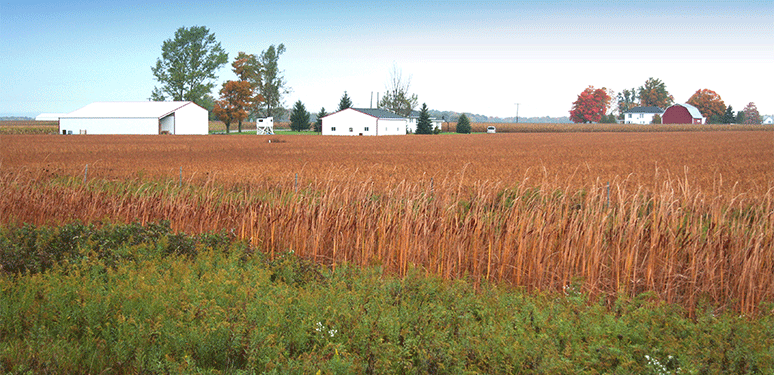Why Cable ISPs are Best Suited to Power America's Smart Cities

The concept of a smart city is something that we've heard a lot about and seems to offer significant benefits for local municipalities. And with most of a community's important utilities and urban infrastructure now being managed through digitally connected information technology systems, more cities are seeking out ways to find efficiencies and information sharing by linking their networks together. A new report released this morning highlighting how cable ISPs can make smart cities become a reality offers city planners successful case studies and useful planning steps for how to make their
Preparing Our Networks for Light Field Displays and the Future of Education

Imagine going to school and conducting a virtual chemistry experiment with lab scientists 3,000 miles away. Or coexisting in a virtual meeting space with colleagues who, instead of dialing into a video conference call, can feel as though they are working together in the same room. In the latest video from CableLabs' Near Future series, light field displays are featured prominently and viewers get a peek into how people will interact with media in the future and how it will impact the future of education. Arianne Hinds, principal architect and futurist at CableLabs, gave NCTA insight into where
CableLabs Shows How Broadband Networks Will Power the Future of Education

Kids today already learn much differently than their parents did in school. They've grown up with Smartboards and iPads in classrooms—technology tools that have revolutionized how people learn, their desire to learn, and the way information can be retrieved with a simple finger swipe. But what about their children? What will schools look like a couple of decades from now? CableLabs has given audiences a sneak peek in their third installment of "The Near Future: Ready for Anything," a series that delves into how technology and high-speed internet will transform the future, and how the broadband
U.S. Internet Speeds Just Keep Getting Better

According to Ookla, the leaders in internet speed testing, from June 2017 to June 2018 the average download speed in the U.S. went from 69.47 Mbps to an astonishing 93.98 Mbps. This upswing is also related to Ookla data reporting how U.S. speeds are far ahead of the global average download speed of 46 Mbps. Over the past two decades, more than $275 billion has been invested in capital infrastructure by cable ISPs. Benefits of that investment can be seen by looking at how much average U.S. download speeds have increased in one single year. Super-fast connections and gigabit speeds are literally
Average U.S. Internet Speeds More Than Double Global Average

The United States is one of the leaders in next generation broadband, thanks in part to over $275 billion in infrastructure investment by cable ISPs, and that investment is paying off. According to Ookla, the forerunner in internet speed tests, the average U.S. internet download speed now clocks in at a whopping 93.98 Mbps, as of June 2018. That means the United States is over twice as fast as the global average speed of 46.25 Mbps. High-speed internet and gigabit speeds are literally changing people's lives. Constant connectivity impacts the way everyone lives, works, learns and plays, which
Reaching the Last Mile: Hearing on Rural Broadband Examines Solutions to Closing the Digital Divide

Today, the U.S. House of Representatives holds an important hearing to discuss the challenges and benefits of rolling out broadband to rural regions across the country in order to reach communities that are currently affected by the digital divide. We applaud members of the Subcommittee on Communications and Technology for opening up a dialogue that brings to the table innovative broadband solutions and approaches to connect more Americans. As we have seen, high-speed and reliable connectivity is the key to improving a community's economic vitality, education, healthcare, and growth, and rural
Fast Internet Opens Doors to New Ways of Educating Students

In most cases, the way that students learn today is completely different than how they received classroom instruction, or did their homework, from even just five years ago. Internet expansion and the rise of digital devices inside and outside of the home have led to new ways of learning in schools, and its also given people who live in the most remote regions of the country the opportunity to learn from experts through distance learning. Cable broadband providers have invested more than $275 billion over the past 20 years to upgrade connectivity and improve internet access, and education is an
New Poll Shows Americans Satisfied with Quantity and Quality of Cable TV

When it comes to what people appreciate most in a TV service, the quality of programming and the vast menu of shows that are available to them prove to be critical factors that contribute to consumers' overall satisfaction with their entertainment packages. According to a recent Morning Consult survey, an overwhelming majority of people—83 percent—reported that they are satisfied with their cable or online streaming subscription. For those who subscribed to a cable TV service, 81 percent said they were specifically satisfied with the content quality, while 78 percent reported satisfaction with
Rural America Thrives on Gigabit Internet

Gigabit internet expansion is here, and it is completely transforming how rural communities grow and thrive. People who once may have flocked to Silicon Valley or big cities are now more likely to consider more remote regions because of the advanced connectivity that would allow their business, entrepreneurial activities, entertainment and social lives to flourish. Small towns are beginning to compete with some of their more urban counterparts when it comes to telehealth, long distance learning, and economic vitality. ISPs have been working to close the digital divide for rural communities
Smart Gigabit Communities: How Cox is Setting Cities up for Success

Smart gigabit communities have been popping up all over the country over the past couple of years. An initiative created and funded by the National Science Foundation’s US Ignite program, a smart gigabit community is defined by the organization as a “living lab” environment for the next generation of gigabit applications. These communities are encouraged to drive innovation and economic opportunities through utilizing high-speed networks and local resources, and Cox Communications has been a leading partner in this effort. The ISP is the first private business to fund multiple cities in the
